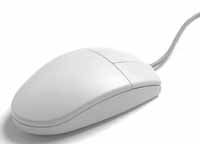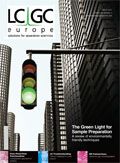Event News
Upcoming Events
A conference on New EU GMP Annex 11 Regulations for Computerized Systems covering the impact on CSV Policies and Procedures is a two-day educational course held on the 5–6 May 2011 in Heidelberg, Germany organized by Concept Heidelberg on behalf of the European Compliance Academy (ECA).

EU GMP Annex 11 for computerized systems has been an unchanged part of EU GMP since 1992. In 2008, the European Medicines Agency issued a proposed update that was a major change to the regulation. There were also consequential changes to Chapter 4 on documentation that were also issued for industry comment. Within the six month comment period, over 1400 responses from industry were received by the Agency.
The final version of Annex 11 was issued in January 2011 and becomes effective on 30 June 2011. The structure of the released document has a Principle and 17 clauses but the text is longer than the current version it replaces. The changes to Chapter 4 are no longer consequential but require laboratories to define raw data including electronic records.
Major changes in Annex 1 mean that applications must be validated and IT infrastructure must be qualified; risk management in both computer validation and change control need to be formalized; the life cycle validation phase has been extensively expanded; the requirements traceability throughout a life cycle moves from a regulatory expectation to a regulatory requirement for the first time; New requirements for data integrity, availability and confidentiality have been introduced, vendor audit reports should be available for inspectors to review; and the use of electronic signatures for signing documents, including records, has now been covered explicitly.
However, it is the consequential changes to Chapter 4 that update the regulation for documentation that bring major changes to European GMP regulations. There are new requirements for the definition of electronic raw data and the need to keep and manage all electronic records that brings this portion of EU GMP into the 21st century. The new versions of Annex 11 and Chapter 4 combined are Europe's answer to 21 CFR 11 for electronic records and electronic signatures.
Therefore individuals involved with computerized systems, as well as regulated organizations that operate them, need to be aware of the changes that these updates bring and be prepared for them. Implementation of Annex 11 and Chapter 4 require a good understanding of the changes and how they impact existing computer validation policies and procedures, define and manage electronic records but also how computer systems are validated or revalidated in the future.
There are three main objectives of this education course, according to the organizers:
- To review and understand the changes that have been made in the new version of EU GMP Annex 11 before it becomes effective.
- To review and understand the impact of the changes to EU GMP Chapter 4 (Documentation) and their impact on the definition of raw data and generation and maintenance of electronic records.
- To understand how the requirements of Annex 11 and Chapter 4 interact.
These three objectives aim to allow organizations to plan for the changes to policies and procedures for the validation of computerized systems and management of electronic raw data that the new regulations bring.
Speakers include Questions of Quality columnist Bob McDowall, UK, and KarlHeinz Menges, European GMP Inspector, Germany.
12–14 April 2011
6th Symposium on MS and Related Techniques in Advanced Analytical Science
Hilton Manchester Deansgate, Manchester, UK
Contact: Mark McDowall
Tel: +44 161 435 4100
Tel: +44 161 435 4444
Email:mark_mcdowall@waters.com
Website:www.cvent.com/events/info/summary.aspx
27–28 April 2011
VII International Ion Chromatography Conference
Katowice, Poland
Organizer: Institute of Environmental Engineering of Polish Academy of Science
Contact: Rajmund Michalski
Tel: +48 32 2716481
Fax: +48 32 2717470
E-mail: michalski@ipis.zabrze.pl
Website:www.cia-conference.com
1–5 May 2011
Joint Congress 2011 (ISCC, MSB and GC?GC)
Town and Country Resort and Convention Center, San Diego, California, USA
Organizer: CASSS - An International Separation Science Society
Contact: Renee Olson
Tel: +1 510 428 0740
Fax: +1 510 428 0741
Email:rolson@casss.org
Website:m360.casss.org/event.aspx?eventID=26258
11–12 May 2011
The Chromatographic Spring Symposium & Annual General Meeting
Novartis Site, Horsham, West Sussex, UK
E-mail:chromsoc@meetingmakers.co.uk
Tel: +44 141 434 1500
Fax: +44 141 434 1519
Regulatory Deadlines and Supply Chain Challenges Take Center Stage in Nitrosamine Discussion
April 10th 2025During an LCGC International peer exchange, Aloka Srinivasan, Mayank Bhanti, and Amber Burch discussed the regulatory deadlines and supply chain challenges that come with nitrosamine analysis.











